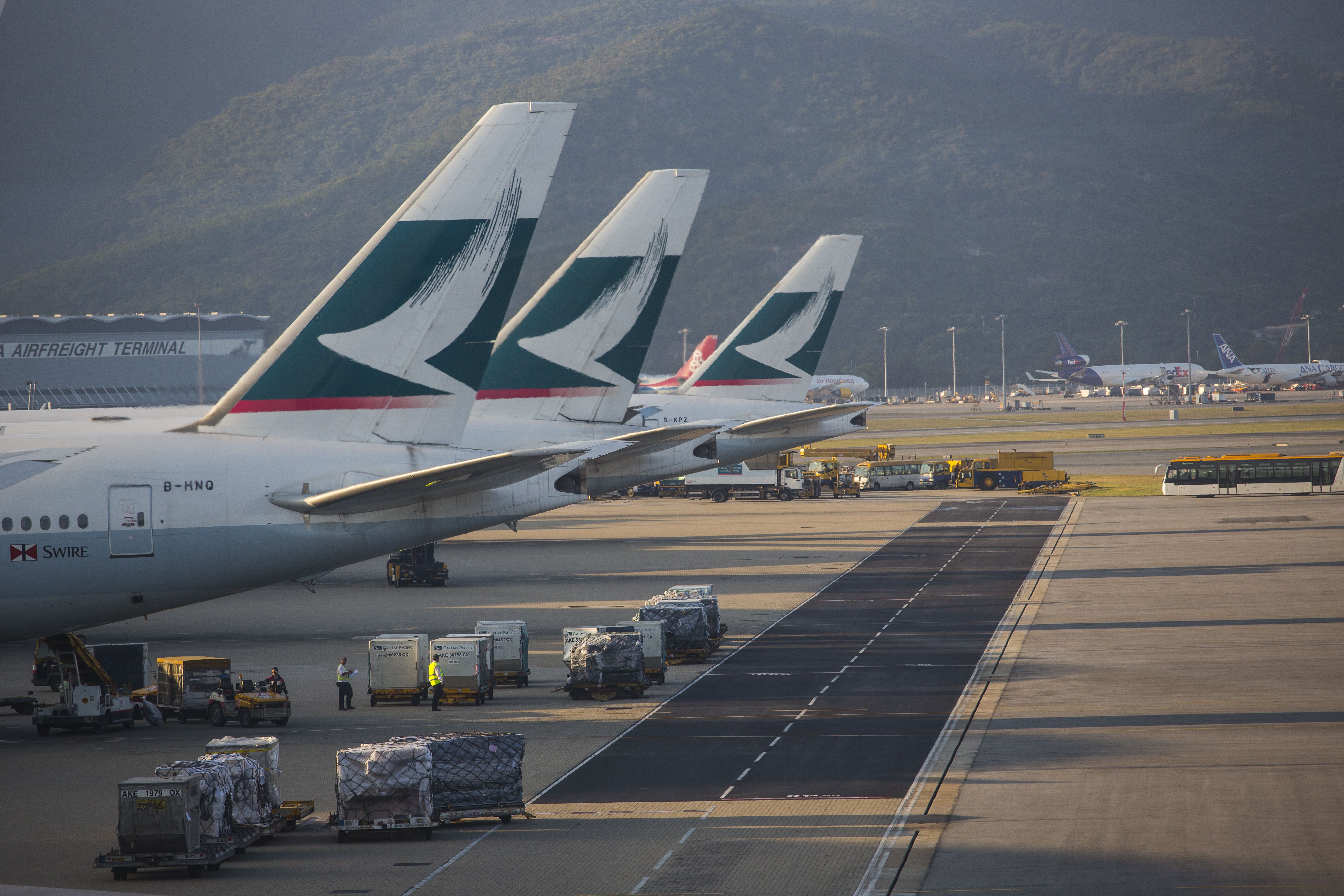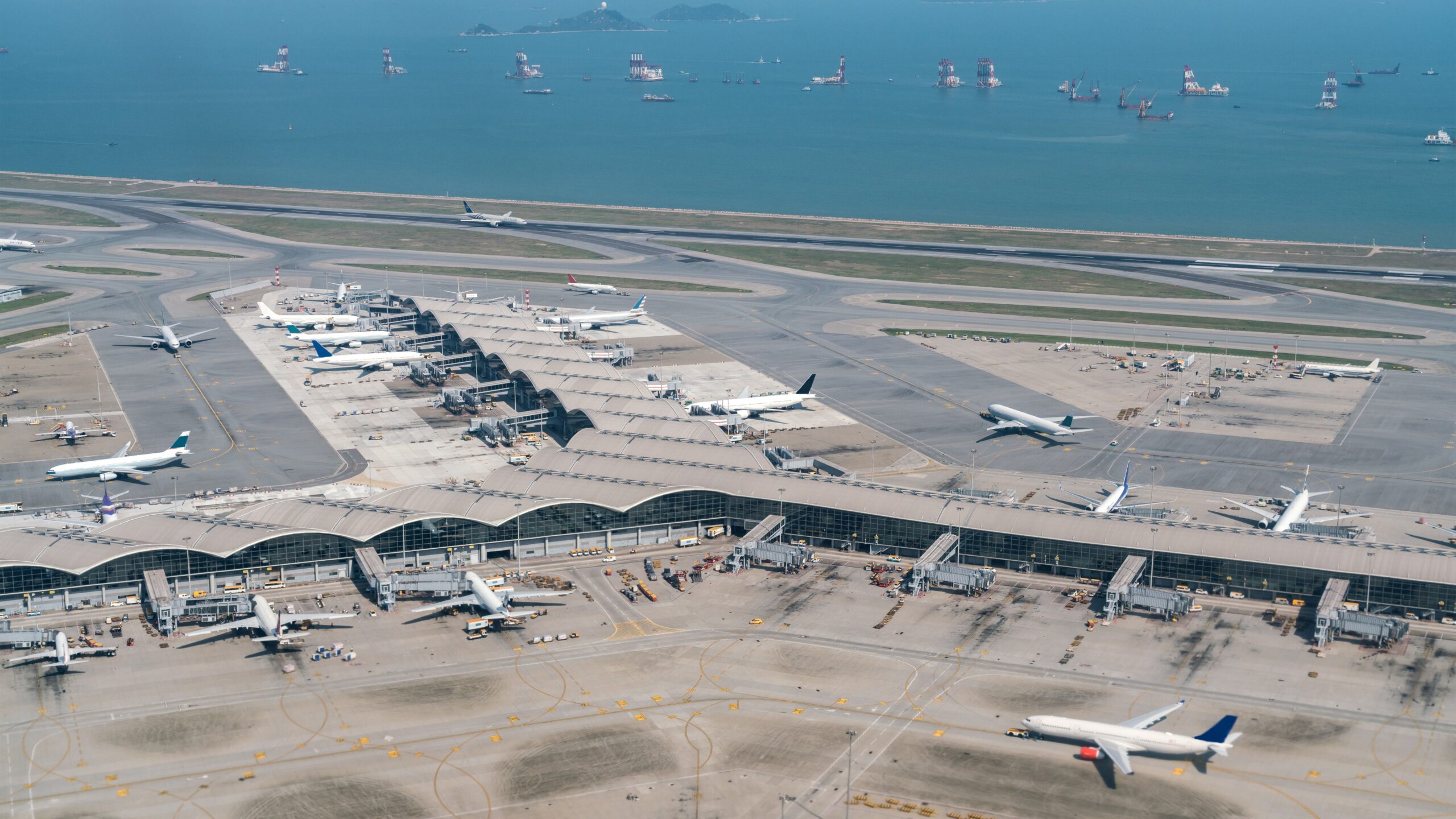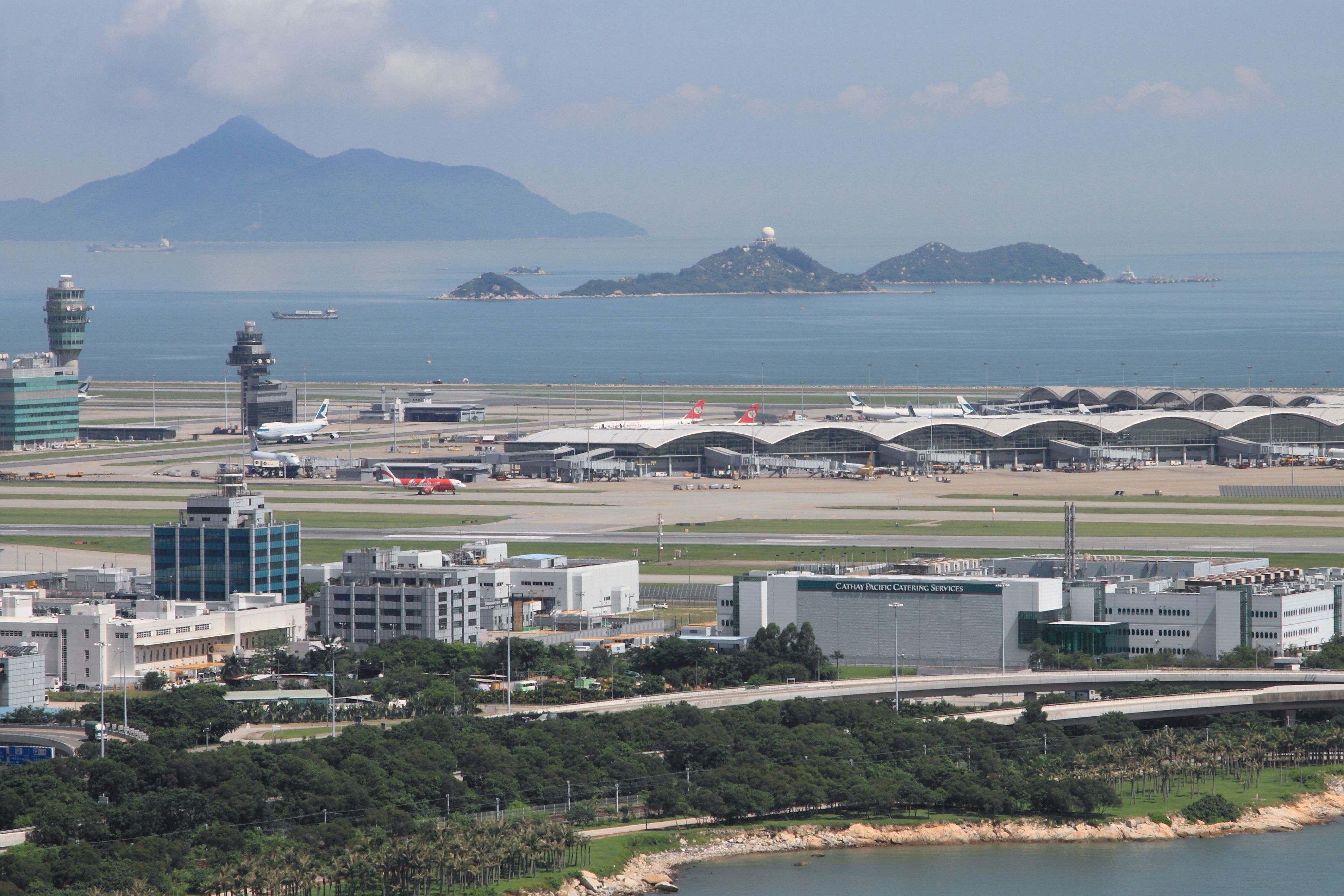Hong Kong International Airport (HKG) has officially launched its three-runway system. During the inauguration ceremony, three aircraft took off and landed simultaneously. In light of the news, the airport aims to restore its status as an international hub, which it lost due to the strict COVID-19 restrictions in Hong Kong.
Three-runway system
The airport’s three-runway system, worth $18 billion, took 13 years to complete, from the initiation of public consultation to full operational status. The airport currently has North, Center, and South runways.
The new North Runway was officially commissioned in November 2022. Since then, HKG has continued to operate on two runways, while the Centre Runway has been temporarily closed for reconfiguration. The reconfiguration work included leveling the runway pavement to align with the connecting taxiways, building new runway entry and exit taxiways, and adding new wrap-around taxiways at both ends of the runway.
Once the reconfiguration was finished, flight checks and an aircraft crash and rescue exercise were conducted on the Centre Runway in September and October, respectively.
Ambitious plans
Speaking at the inaugural event, the Chief Executive of the Hong Kong Special Administrative Region (HKSAR), John Lee, said that the three-runway system will help increase the airport’s capacity, facilitating more airline growth.
Photo: Yu Chun Christopher Wong | Shutterstock
The airport has ambitious plans. In about 10 years, it aims to serve 120 million passengers and handle 10 million tonnes of cargo annually. Commenting on the new runway system, Fred Lam, Chairman of Airport Authority Hong Kong (AAHK), said:
“The 3RS will significantly enhance the overall capacity of the airport, further expanding our extensive air traffic network and consolidating our position as an international aviation hub. The commissioning of the 3RS will provide impetus for the Airport City development and support Hong Kong’s economic growth.
“Leveraging Hong Kong’s unique strengths, the Airport City will be a world-leading new landmark, attracting visitors from all around the world and driving Hong Kong’s economic development.”
Hong Kong’s flag carrier Cathay Pacific congratulated the airport ahead of commissioning the three-runway system, which it said will mark a new phase of growth and development for the Hong Kong aviation hub.

Related
Cathay Pacific Nears Full Recovery And Welcomes Hong Kong’s 3rd Runway
Hong Kong International will soon be adding around 30% more runway capacity, just as Cathay Pacific reaches 100% of pre-COVID traffic.
Lagging behind in post-pandemic recovery
Hong Kong International Airport remains among the busiest airports in the world, especially when it comes to freight traffic; however, passenger traffic has not returned to pre-pandemic levels.
Rival airports, such as Seoul Incheon International Airport (ICN) and Singapore Changi International Airport (SIN), surpassed Hong Kong in international passenger traffic. According to the Airports Council International (ACI) data, ICN handled a total of 55.7 million passengers, while SIN had a total of 58.5 million in 2023.
Photo: mary416 | Shutterstock
In 2023, HKG handled 40 million passengers and 276,000 flight movements, representing increases of around 600% and 100%, respectively, compared to 2022. The airport then projected that the passenger traffic would return to pre-pandemic levels by the end of 2024.
Indeed, the traffic has been steadily growing. In October 2024, HKG accommodated a total of 4.5 million passengers, representing a 21% increase compared to the same period last year. However, this compares to 5.4 million passengers handled during the same period in 2019.



